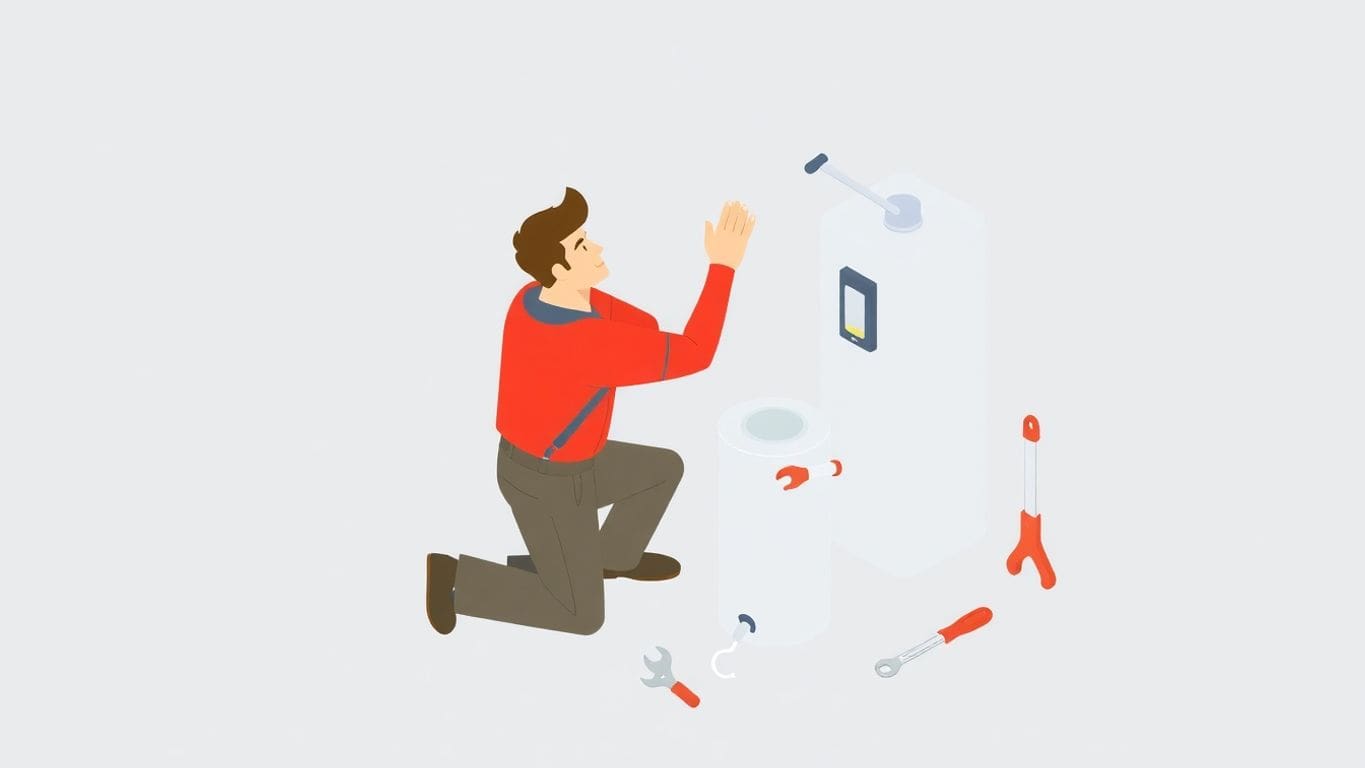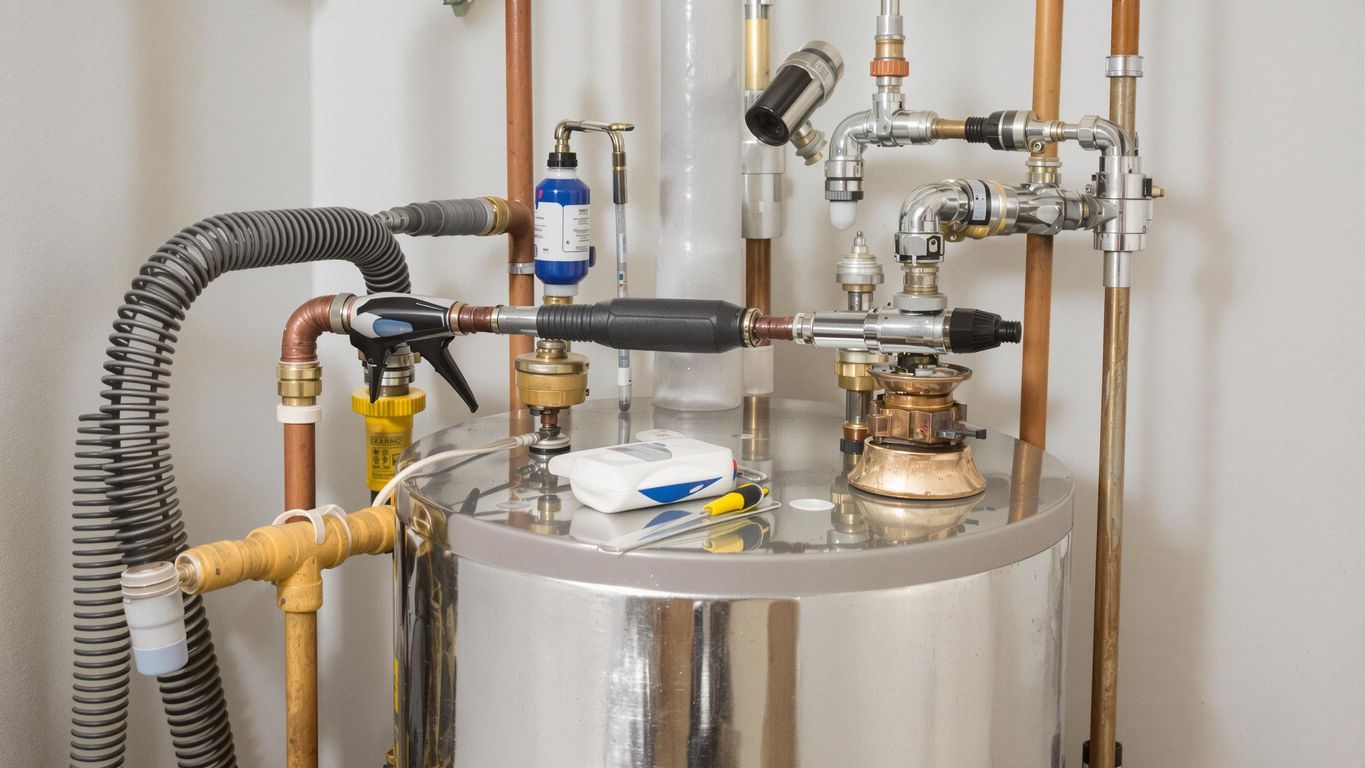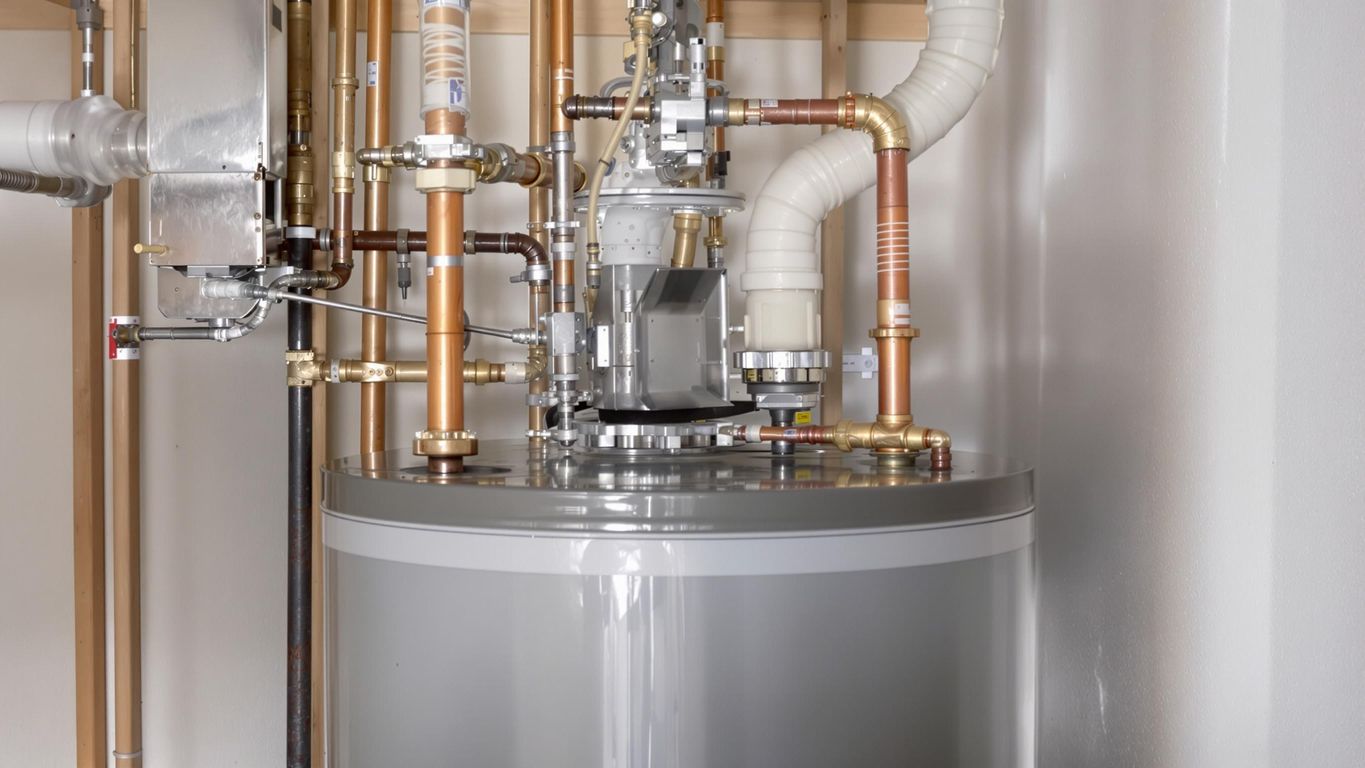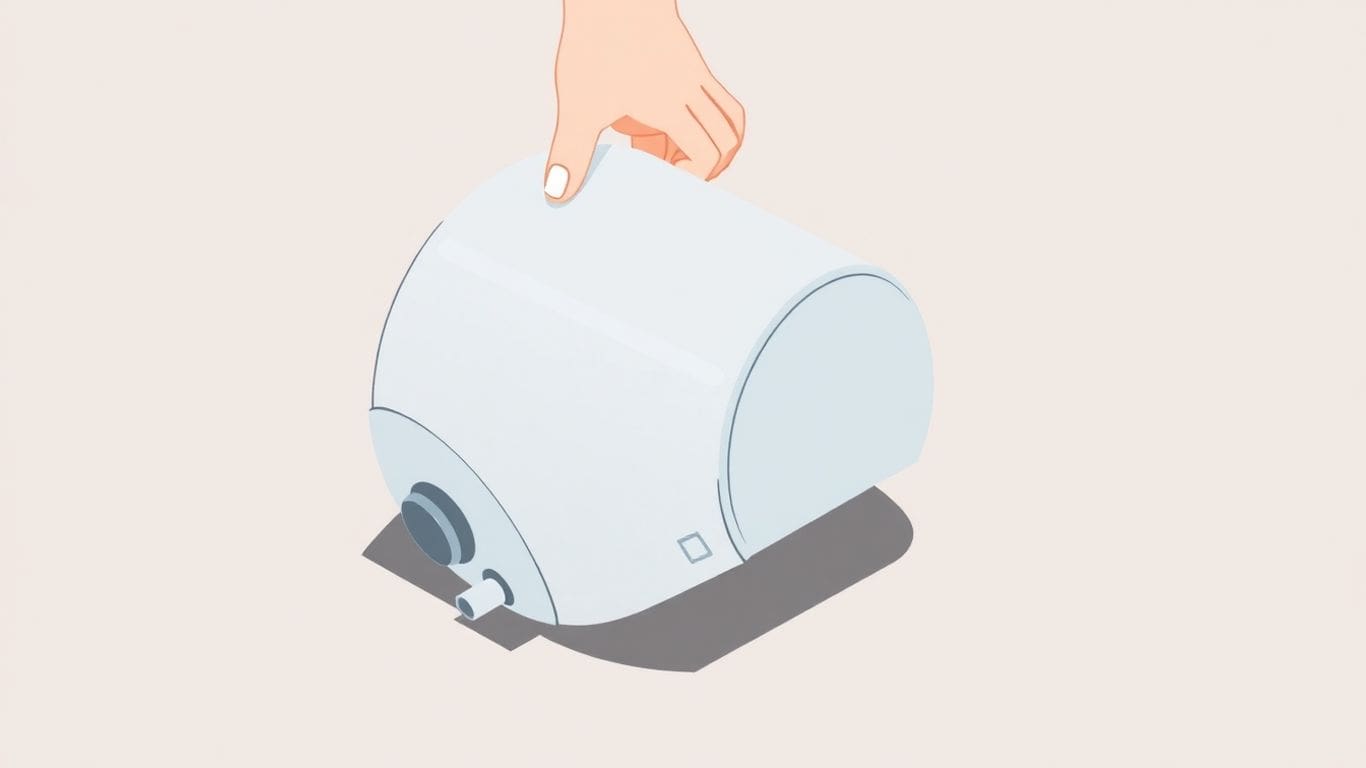
Taking care of your hot water heater might not be the most exciting task, but it’s one of those things that can save you a lot of trouble down the road. Whether you’ve got a tank or tankless system, regular maintenance keeps it running smoothly, helps you avoid costly repairs, and even extends its life. This guide will walk you through how to service a hot water heater step by step, with simple tips anyone can follow.

Water heaters come in a few main types, and knowing which one you have is important for maintenance. Here are the common types:
Each type has unique maintenance needs, so it’s worth checking your unit’s manual for specific instructions.
Regular maintenance isn’t just a nice-to-have—it’s a must. A well-maintained water heater lasts longer, runs more efficiently, and is less likely to break down.
Skipping maintenance can lead to:
Taking care of your water heater now saves you money and headaches later.
It’s smart to keep an eye out for problems so you can fix them early. Here are some common issues:
Taking a little time to understand your water heater can make a big difference. You’ll catch small problems before they turn into big ones, keeping your home’s hot water flowing smoothly.
Before starting any work on your water heater, make sure you have the right tools. Having everything ready will save you time and keep things running smoothly. Here’s a list of tools you’ll likely need:
Having these tools handy ensures you’re prepared for most maintenance tasks.
Safety should always come first. Working with water heaters involves electricity, gas, or hot water, all of which can be dangerous if handled improperly. Follow these steps to stay safe:
Knowing how to properly shut off your water heater is critical. Here’s a quick guide:
Tip: Always double-check that both the power and water are off before beginning any work. This simple step can prevent accidents and damage to your equipment.
The ideal temperature setting for most water heaters is 120°F. This is hot enough to meet your household needs while also being safe. Setting your thermostat at 120°F prevents scalding risks and reduces energy use. If your thermostat is set much higher, you could be paying more on your energy bill than necessary.
For every 10°F you lower the temperature, you might save about 3–5% on energy costs. Plus, keeping the temperature in this range helps protect your water heater from unnecessary wear and tear.
Adjusting the thermostat on your water heater is a simple task, but safety is key. Here’s how you can do it:
Always use caution when working around electricity or gas. If you’re unsure, it’s better to call a professional.
Keeping your water heater at the right temperature has multiple benefits:
By taking a few minutes to check and adjust your thermostat, you can keep your water heater running efficiently and safely for years to come.
Leaks and corrosion are among the most common issues with water heaters. Start by inspecting the area around the base of the heater. Look for puddles or damp spots. Even small leaks can lead to bigger problems if ignored. Also, check the exterior of the tank for rust or discoloration. Rusty spots could mean the tank is corroding from the inside out, which might require replacement.
The pressure relief valve (or TPR valve) is a safety feature that prevents the tank from over-pressurizing. To test it, place a bucket under the valve’s discharge pipe. Lift the valve’s lever gently. You should hear a slight hiss and see water flow into the bucket. If nothing happens or the valve won’t close properly, it’s time to replace it.
Here are some signs your water heater might need attention:
Regular inspections can catch small problems before they turn into costly repairs. It’s worth taking the time to check your water heater every few months.
Over time, minerals and debris from your water supply settle at the bottom of your water heater tank. This sediment reduces efficiency by making your heater work harder to heat water. It can even lead to leaks or damage to the tank. Flushing your tank regularly helps keep it running smoothly and extends its lifespan.
Flushing your water heater is a simple process if you follow these steps:
You should flush your water heater at least once a year. If you live in an area with hard water, you might need to do this every six months. Regular flushing keeps your heater efficient and prevents costly repairs.
Pro Tip: Flushing your tank not only saves energy but also helps avoid unexpected breakdowns. Make it part of your home maintenance routine!
The anode rod is a small, but crucial, part of your water heater. Its main job is to protect the tank from rust. It does this by acting as a "sacrificial" metal, meaning it corrodes so your tank doesn’t. Without a functioning anode rod, your water heater’s lifespan could shorten significantly.
Inspecting the anode rod isn’t hard, but it does take some care. Here’s how you can do it:
Tip: Use a flexible anode rod if you have limited space above your water heater.
Keep an eye out for these signs that your anode rod might need replacing:
Regularly checking the anode rod can save you from costly repairs and extend the life of your water heater. It’s a quick task that pays off in the long run.
Over time, minerals like calcium and lime can collect inside your tankless water heater. This is especially common if you live in an area with hard water. These minerals create scale buildup, which can clog the system and make it less efficient. If left untreated, it might even damage the heater’s internal components. Regular descaling is key to keeping your heater running smoothly.
If your water heater is taking longer to heat water or making unusual noises, it might be time to descale it.
Descaling your tankless water heater isn’t too hard if you follow these steps:
To reduce scale buildup in the future, try these tips:
By staying on top of descaling and maintenance, you’ll extend the lifespan of your tankless water heater and keep it working like new.
The Temperature and Pressure Relief (TPR) valve is a safety device on your water heater. Its job is to release water if the tank gets too hot or the pressure inside becomes too high. Without it, your tank could overheat or even burst. Checking this valve regularly is critical for your safety.
Testing your TPR valve is simple but requires care. Follow these steps:
What to look for:
Always wear gloves and take your time when testing to avoid burns or spills.
If your TPR valve isn’t working, it’s time for a replacement. Here’s how to do it:
Sometimes, replacing a TPR valve can feel overwhelming. If you’re unsure or uncomfortable, don’t hesitate to call a technician. They can ensure the job is done right and safely. Plus, they can check for other issues, like corrosion or hidden leaks, that might need attention.
If your water heater is older or showing signs of serious wear, it may be time to consider upgrading to a new, energy-efficient model. Newer models not only work better but can also save you money on energy bills.

Adding insulation to your water heater and pipes can save energy and cut costs. Here’s how you can do it:
If your water heater is over 15 years old, it might be time for an upgrade. Modern models, like Energy Star certified heaters, use less energy and heat water faster. Tankless and solar-powered options are also worth considering for long-term savings.
Pro Tip: Upgrading your water heater can improve your home’s comfort and lower energy bills. Look for local incentives to help offset the cost.
Standby heat loss happens when your water heater keeps reheating water you’re not using. Here’s how to minimize it:
Quick Tip: Every 10°F you lower the temperature can save you about 5% on energy costs.
Making these small changes can lead to big savings over time. Plus, you’ll be helping the environment by using less energy!
Sometimes, even with your best efforts, things can go wrong. If your water heater is leaking, making strange noises, or not heating water at all, it’s time to call a professional. These issues often point to deeper problems that need expert knowledge to fix. For instance, a leak might mean the tank is corroding from the inside, which isn’t something you can easily repair yourself.
Other signs to watch for include:
Finding the right person for the job can feel overwhelming, but it doesn’t have to be. Look for a licensed plumber or technician with experience in water heater repairs. Ask for references or reviews to make sure they’re reliable. You can also check if they offer guarantees on their work, which shows they stand by their service.
Here are a few tips to help you choose:
The cost of hiring a professional varies depending on the problem. Here’s a quick breakdown of typical expenses:
| Service Type | Estimated Cost Range |
|---|---|
| Basic inspection | $50 – $100 |
| Replacing a thermostat | $150 – $300 |
| Fixing a leak | $200 – $500 |
| Full water heater replacement | $800 – $3,000 |
Keep in mind, regular maintenance by a pro can save you money in the long run by preventing major issues.
If you’re unsure, it’s always better to be safe than sorry. A professional can not only fix the problem but also ensure your water heater is running efficiently and safely.
To keep your water heater running for years, set up a simple maintenance schedule. Regular tasks like flushing the tank and checking for leaks can make a big difference. Aim to inspect your heater every three to six months. A little effort now can save you from costly repairs later.
Here’s a quick checklist to get you started:
Some mistakes can shorten your water heater’s life. For example:
Take simple steps to avoid these issues, and your heater will thank you.
For long-term care, think beyond just maintenance. Keep the area around your heater clean and free of clutter. If you have hard water, consider installing a water softener to reduce mineral buildup. Schedule a professional inspection once a year, especially for gas heaters.
A well-maintained water heater can last 10-15 years, or even longer for tankless models. Treat it like an investment, and it will pay off with reliable hot water and fewer headaches.
If your heater is over 10 years old or showing signs of wear, it might be time to think about upgrading to an energy-efficient model. Newer models can save you money on energy bills and provide better performance.
Knowing when to replace your water heater can save you money and headaches. Here are some signs that it’s time for a new unit:
If you spot these issues, it’s probably time to upgrade. A new water heater can improve efficiency and ensure reliable hot water for your home.
When replacing your water heater, picking the right type is key. Here are some common options:
| Type | Features | Best For |
|---|---|---|
| Tank Water Heater | Stores hot water; lower upfront cost | Small households |
| Tankless | Heats water on demand; saves energy | Larger families |
| Heat Pump | Uses electricity efficiently | Eco-conscious homes |
| Solar | Uses sunlight; high upfront cost, low bills | Sunny climates |
Think about your household size, budget, and energy goals before deciding.
Upgrading to an energy-efficient model could lower your utility bills and provide more consistent hot water.
Replacing a water heater isn’t too complicated, but safety matters. Follow these steps:
Tip: If you’re unsure about any step, consider hiring a professional. Heating Geek offers expert advice and services to help with water heater replacement.
You should flush your water heater once a year to remove sediment buildup. This helps maintain efficiency and extend the lifespan of the unit.
The recommended temperature is 120°F. This setting provides hot water, reduces the risk of scalding, and saves energy.
Inspect the anode rod every 2-3 years. If it’s heavily corroded or less than half an inch thick, it’s time to replace it.
The Temperature and Pressure Relief (TPR) valve prevents the tank from overheating or building up too much pressure. It’s a critical safety feature.
Yes, basic tasks like flushing the tank or adjusting the thermostat can be done yourself. However, for complex issues, it’s best to call a professional.
Look for water pooling around the base of the unit or dripping from connections. Rusty water or a drop in water pressure can also indicate a leak.
If your water heater is over 10-15 years old, provides inconsistent hot water, or has visible corrosion, it might be time for a replacement.
Yes, tankless water heaters require descaling every 1-2 years to prevent mineral buildup and ensure efficient operation.


